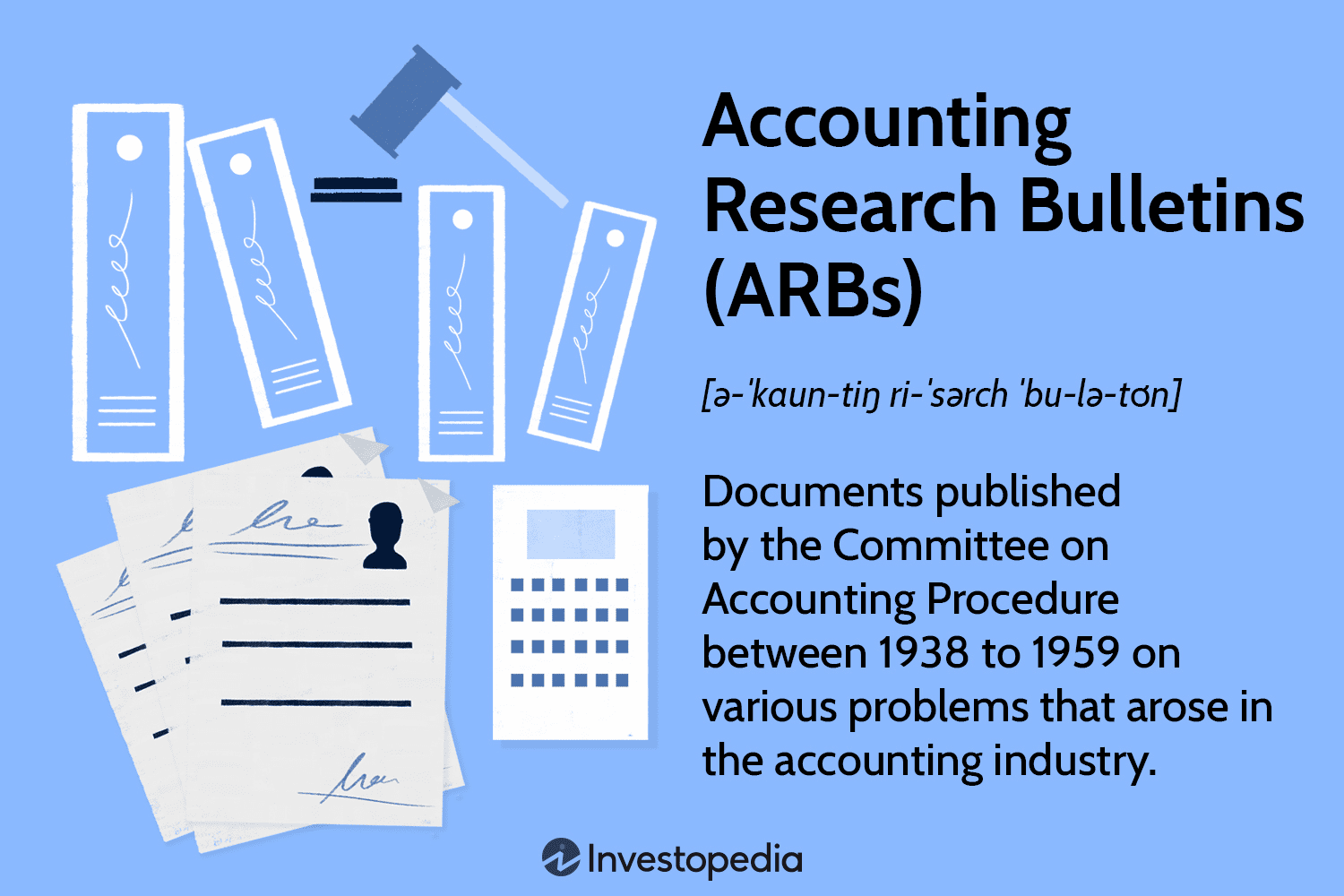
Introduction:
Accounting Research Bulletins (ARBs) are historical documents issued by the Accounting Principles Board (APB), a former committee of the American Institute of Certified Public Accountants (AICPA). These bulletins served as authoritative guidance on accounting issues and were widely recognized as standards for financial reporting in the United States before the establishment of the Financial Accounting Standards Board (FASB) and the subsequent issuance of generally accepted accounting principles (GAAP).
Background and Purpose
The need for consistency and reliability in financial reporting led to the creation of ARBs. Prior to their issuance, accounting standards were fragmented, with various entities and professional organizations issuing their own interpretations and guidelines. This lack of uniformity led to confusion and inconsistency in financial reporting practices.
To address this issue, the AICPA established the Accounting Principles Board in 1959, which was tasked with issuing ARBs to provide authoritative guidance on accounting principles and procedures. The primary objective of ARBs was to enhance the comparability and reliability of financial statements by standardizing accounting practices across industries.
Content and Structure
ARBs cover a wide range of accounting topics, including revenue recognition, inventory valuation, depreciation methods, and financial statement presentation. Each bulletin typically addresses a specific accounting issue or practice and provides guidance on how to account for transactions or events related to that issue.
The structure of ARBs typically includes the following components:
- Introduction: Provides an overview of the accounting issue addressed in the bulletin and the rationale for issuing guidance on that particular topic.
- Scope: Defines the scope of the bulletin and specifies the types of transactions or events to which the guidance applies.
- Principles: Outlines the underlying principles and concepts that form the basis for the accounting treatment prescribed in the bulletin.
- Application: Provides specific guidance on how to apply the accounting principles to various transactions or events, including examples and illustrations to facilitate understanding.
- Effective Date: Specifies the effective date of the bulletin and any transitional provisions or implementation guidance provided.
- Amendments and Interpretations: Indicates any subsequent amendments or interpretations issued by the AICPA or other standard-setting bodies that affect the guidance provided in the bulletin.
Authority and Enforcement
During their tenure as authoritative accounting guidance, ARBs were widely recognized as the primary source of GAAP in the United States. Companies were expected to comply with the principles and procedures outlined in the bulletins when preparing their financial statements.
While ARBs themselves did not have the force of law, failure to comply with the guidance provided in the bulletins could result in adverse consequences, including regulatory scrutiny, litigation, and damage to the credibility of financial statements.
The AICPA and other professional organizations played a key role in promoting compliance with ARBs through educational programs, publications, and professional certification requirements. Additionally, regulatory agencies such as the Securities and Exchange Commission (SEC) relied on ARBs as a reference point in their review of financial statements filed by publicly traded companies.
Legacy and Transition to FASB Standards
Despite their historical significance, ARBs became increasingly outdated as accounting practices evolved and new issues emerged that were not addressed in the existing bulletins. Recognizing the need for a more responsive and independent standard-setting process, the AICPA disbanded the Accounting Principles Board in 1973 and established the Financial Accounting Standards Board (FASB) as its successor.
The FASB assumed responsibility for issuing accounting standards in the United States and embarked on a project to review and codify existing GAAP, including the content of ARBs. Many of the principles and concepts established in ARBs were incorporated into the FASB Accounting Standards Codification (ASC), which serves as the authoritative source of GAAP today.
As a result, while ARBs no longer have the same level of authority they once did, their legacy lives on in the form of the foundational principles and concepts that continue to underpin financial reporting standards in the United States.
Conclusion
Accounting Research Bulletins played a crucial role in the development of accounting standards in the United States, providing authoritative guidance on a wide range of accounting issues and helping to standardize financial reporting practices across industries. While they have been superseded by more current standards issued by the FASB, the principles and concepts established in ARBs continue to influence financial reporting practices to this day. Understanding the history and evolution of ARBs is essential for gaining insight into the development of GAAP and the regulatory framework that governs financial reporting in the United States.







